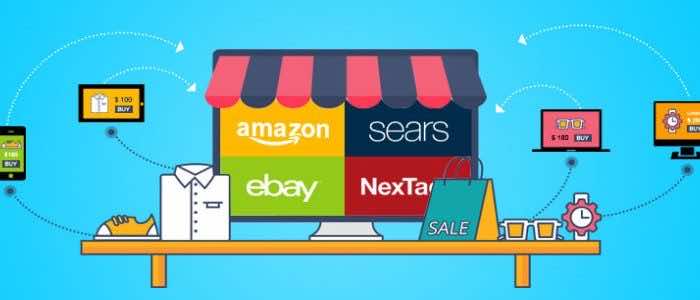Online marketplaces are flourishing. Amazon, eBay, and Flipkart became household names. Their high revenue inspires entrepreneurs to create similar platforms. However, only a few of them can compete with industry giants on equal footing.
The truth is that building an e-commerce platform is anything but a trivial task. There are so many things you should take into account. You should consider the niche, choose the right business model, and must-have functionality. Finally, you should find promotion strategies that will work for your e-commerce business.
In this blog post, I want to discuss the five things you should define before investing in marketplace development services.
1. The type of your future online marketplace
For starters, decide what you’re going to sell. When you know the product, you will quickly understand what marketplace type (B2B, B2C, or C2C) will suit your business the most.
The choice of the online marketplace type is crucial. It will have a direct impact on monetization strategies and marketing campaigns.
Below you can see the classification of online marketplaces:
Another classification approach divides online marketplaces into two groups: vertical and horizontal.
Vertical marketplaces focus on offering specific goods or services to particular customers. Horizontal platforms sell various products to a broad audience.
In recent years, building online marketplaces with focus on a particular niche has become a more sensible option.
First of all, the narrow focus allows companies to highlight the benefits and specific features of each item they sell. Brands attract new visitors with detailed product or service descriptions. This way, they make their offerings more valuable for the target audience.
Also, niche marketplaces offer users a more personalized customer experience than horizontal platforms. It is because buyers can find a specific solution to a particular issue on these websites.
2. The monetization strategy
The next thing you should consider is the monetization strategy. After all, it defines how customers will pay for your services.
Let’s take a look at the most popular revenue models.
- Commission. If you adopt this strategy, you get a fixed percentage of each transaction on your e-commerce website.
- Subscription fees. In this case, customers pay for getting access to your services. These can be monthly or yearly fees.
- Advertising. This revenue model supposes selling space to other businesses. This way, you allow them to promote their products or services on your marketplace.
- Listing fees. You can charge sellers for publishing their goods on your marketplace. This strategy is especially effective if your platform lists slow-selling items.
For starters, choose one revenue model. Later, when you have more customers, you can combine other tactics. Sooner or later, you will be able to find out what monetization methods suit your business perfectly.
3. User acquisition techniques to grow your customer base
The smooth launch of an online marketplace requires having both sellers and buyers on board. However, the question arises on what side to attract first. This dilemma is called the chicken and egg problem.
Luckily there are several effective user acquisition strategies for kickstarting your platform.
You can follow the advice provided by one of the authors at Hackernoon and focus on gaining one side instead of getting both parties at the same time. Traditionally, the challenging side is the more valuable one. As soon as you get enough users of this category, the other party will join your platform more willingly.
According to Hubspot, scarcity is another efficient marketing technique. By setting time or demand constraints, you create a massive excitement around your platform products.
Amazon uses scarcity technique to encourage shoppers to take immediate action.
4. The software development approach
You have chosen your niche, the monetization strategy, and user acquisition strategies. Now it is high time to talk about the technical aspect of building your online marketplace.
Here you have two options. You can invest in a ready-made solution or develop your platform from scratch.
Let’s see what each of these approaches can offer.
Out-of-the-box solutions are cheaper than bespoke software and can be launched right after the purchase. They suggest generic functionality. In addition, you will get regular updates from the vendor along with training materials such as manuals, guides, and best practices.
As a rule, off-the-shelf software is a proven product with an extensive customer base. Given that, you can count on support of the quality assurance and support teams offered by the vendor.
However, ready-made software is not a magic bullet. Its basic functionality suitable for a broader audience may not satisfy the specific needs of your business.
If you want to get a specialized product that will fulfill particular requests or tasks, consider investing in custom software development. It is true that this approach is more expensive, but it offers your business multiple benefits.
In the long run, you will get a unique solution that will satisfy all your demands. It will enable you to implement the features that may not be available in out-of-the-box software.
5. The software development team that you will build your marketplace
The last but not the least thing you should keep in mind is the development team that will be responsible for building and supporting your online marketplace. Again, you have several options.
You can engage in building an e-commerce platform with your in-house development team.
You can also use the services of freelance developers. It is the most affordable option but includes certain risks.
However, the best option is to choose a software consultancy company with vast experience in creating online marketplaces, which can demonstrate a strong portfolio of delivered products.
Such a team will apply their accumulated domain expertise, and will help you avoid all mistakes concerned with building a marketplace. Thus, you will be sure that you will get a stable and reliable solution.
Final thoughts
I have specified all the points that should be taken into account before you start building your online marketplace, from conducting market research to finding the most effective promotional techniques. I hope that this guide was useful and made the whole development process clearer for you.
Author bio:
Dmitry Chekalin

CEO @ Codica. Software Entrepreneur with 15+ years of experience. Focused on the lean startup approach. I write about startups, marketplaces and SaaS products, and custom software development.


